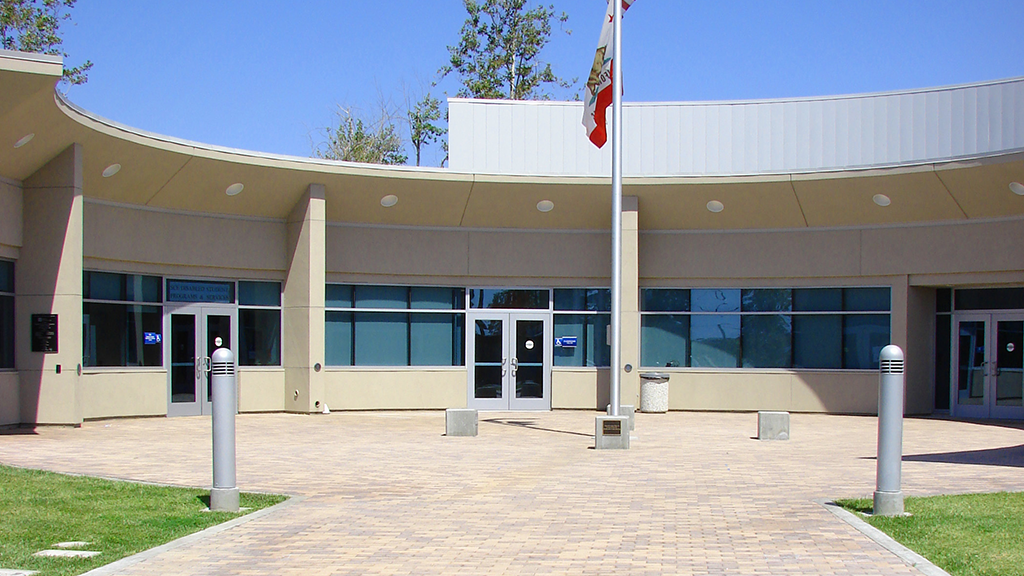
PHOTO CREDIT: POLOLIA/STOCK.ADOBE.COM
Many communities continue to face mass tragedies at their schools. The tragedies leave in their wake unanswered questions mingled with the grief of unimaginable personal loss. As communities turn inward to understand how and why these events occurred, school leaders can help to bring healing by joining their families in systemic explorations to anticipate the unforeseeable and to mitigate harm. While those conversation are difficult, revisiting challenging facts and aligning our policies can be a way to hopefully prevent the next tragedy from happening.
The National School Boards Association’s Council of School Attorneys and the Center for Safe Schools recently updated the publication Fostering Safer Schools: A Legal Guide for School Board Members on School Safety. It is an online resource that can help school boards and school leaders identify processes and questions to navigate the challenges surrounding these difficult conversations and policymaking.
The guide features a new section on lessons learned after the Uvalde, Texas, mass tragedy. In the aftermath of the shooting at Robb Elementary, school security experts have discussed the planning, coordination, and training exhibited by the Uvalde police force and the school’s safety and security protocols. According to media reports, a preliminary investigation into the school shooting focused largely on law enforcement response to the attack, but also found problems with school security procedures that may be very familiar to educators around the country.
The following questions may be explored by schools regardless of whether the school district relies on school resource officers (SROs), its own police force, or has a contract or memorandum of understanding (MOU) with local law enforcement:
- In an active shooter scenario, should officers be trained to identify where the shooter is located and immediately enter the school building/classroom with the objective of neutralizing the shooter? States’ school safety laws increasingly direct school and district leaders to coordinate with local law enforcement and, in some cases, to hold on-site training with police and teachers.
- What active shooter drills and training should students and school staff receive? Frequent Uvalde school lockdowns may have led to less urgency. School safety consultants warn that a “normalcy bias” among educators can affect responses to crisis situations.
- Can districts add structural features to school buildings and classrooms to make it more difficult for an active shooter to gain entry? Aging buildings and faulty locks were cited as possible issues in a preliminary report on the Uvalde shooting. Schools are advised to ensure locks on both interior and exterior doors are functional.
- Does the school have Wi-Fi coverage and reliable cellphone service for communications for both educators and law enforcement? Patchy cellphone service in school buildings may make it difficult for some teachers to receive alerts and to communicate during a crisis.
Planning is not static
One of the important lessons that Uvalde has taught is that safety and emergency planning is neither static nor long-lived. In other words, safety and emergency planning is perishable. It has a shelf life that renders its utility of little value without routine review, engagement, and training. For plans to be meaningful, they must be developed in concert with a variety of actors, most notably first responders. They must also be communicated effectively to stakeholders, families, and students. Regular training for all involved, but particularly for students, teachers, and staff, is essential. Training brings plans to life and allows the opportunity not only to teach students and staff how to mitigate harm, but also to identify and correct unforeseen problems with a particular approach.
Perhaps most important to understanding the limited shelf life of emergency plans is to shift our views of the school campus or the school building as stationary. To the contrary, the school environment (comprised of not only the physical buildings but the people in them and their relationships) is complex and dynamic. New teachers arrive and leave each year along with new families and students. Staff can change and shift between classrooms. The experiences that all the players bring with them change, too. These factors are a few of the variables that contribute to the understanding and execution of an emergency plan. As each of these factors changes, the plans must be reviewed and experienced anew to ensure that they still work.
In reviewing emergency plans, schools should identify the role law enforcement and first responders will play during an emergency, including its immediate aftermath. In addition to the plan itself, memorandums of understanding (MOUs) can be a useful tool in crafting these activities so that all parties, school officials, law enforcement and first responders, and the community have a clear understanding of the expectations and goals of the plan and the protocols that will be followed during an emergency.
Law enforcement
Law enforcement agencies can play a key role in the development, implementation, and review of a school district’s comprehensive school safety plan. Because of overlapping authority and complex legal rules, it is important that, for each phase of emergency management and threat assessment, the roles and responsibilities of law enforcement in school settings and during school emergencies are clearly set out.
MOUs or agreements with law enforcement also provide an opportunity for schools to address concerns and express clarity about the role school resource officers (SROs) will play during emergencies (and during non-emergencies). If a school maintains its own security force, the MOU is an opportunity to clarify the roles of SROs and school security officers, identifying areas of collaboration, overlap, or unique jurisdiction. Defining these roles also creates an opportunity for schools to consider the benefits and costs of employing sworn law enforcement officers.
Besides the obvious training and legal jurisdictional authority that come with sworn law enforcement officers, schools also can use the opportunity to consider how school climate intersects with law enforcement, and precisely how much presence is necessary or optimal to achieve the district’s safety goals. For instance, in a school where the community expresses levels of police mistrust, school leaders may opt for a reduced presence or alternate school security. Such choices, while different from district to district and even school to school, also raise concerns of legal liability in the aftermath of emergencies and mass strategies.
Sworn law enforcement officers are empowered by state and local laws with relatively heightened levels of qualified immunity in the performance of their duties, whereas for-hire security officers may not be. The cost from legal liability if negligence were asserted against the school could increase based on the type of officer carrying out the safety function. Whatever the choice, an MOU and detailed plan offers the opportunity to clearly spell out the functions and responsibilities of the safety officer, including expectations both for daily security and for emergency situations. A workable MOU and plan will include detailed explanations of responsibilities and expectations regarding everything from student interviews to arrests for criminal activity on campus. Such a plan will detail expectations during the school day and at school activities, as well as identify the safety officer’s reporting and supervisory structure and sharing.
Conferring with a school district’s attorney member of the Council of School Attorneys is key to the development of both the emergency plan and related MOUs. School lawyers will help districts manage the potentially tense dynamic between the safety needs of the school and the constitutional rights of students. For instance, while the standard for conducting a search and seizure of a student or a student’s belongings requires only reasonable suspicion (lower than for the public at large), courts will closely scrutinize a school’s actions if challenged regardless of whether the searcher was a sworn law enforcement officer or a civilian security officer or school official.
Even so, ensuring the correct constitutional standard is understood and applied by the necessary school agents is critical both to limiting school liability and to ensuring that a student’s rights are protected as required by law. When it comes to searches by an SRO, schools should ensure that those searches are based in individualized, reasonable suspicion, and that the searches are done under the supervision and authority of a school administrator.
To arm or not to arm
What factors should a school district consider before deciding whether to arm officers and/or school personnel? Aside from the effect on the quality of the learning environment, whether an SRO should be armed will depend on several factors, including state law, potential liability in the event of a shooting by the officer, history of violence in the school, and the purpose of placing the officer in the school. Many schools have a combination of armed and unarmed officers, but the community culture may determine how schools approach this issue.
Schools should keep in mind the Gun-Free School Zones Act (GFSZA) when making decisions about arming non-law enforcement personnel. GFSZA is a federal law that prohibits an individual from knowingly possessing a firearm in a “school zone.” It provides exceptions to that rule for “a law enforcement officer acting in his or her official capacity,” and for a person appropriately licensed by the state, among others.
Some state legislatures have enacted or are considering laws that would allow school personnel to carry firearms on school grounds under certain conditions. In these states, school districts should consider carefully whether arming school personnel will increase school safety to such a degree that it offsets the inherent risks of bringing more firearms onto school grounds. Among the risks to consider are:
- Failure to ensure that staff meet and maintain training certifications.
- Failure to keep weapons safely stowed.
- Firearm accidents.
- Injuries to staff and students.
- Ineffective deployment of armed staff during a crisis.
- Misidentification of staff with guns as shooters during a crisis.
Schools also should consider the cost and availability of insurance to cover the increased liability that may arise when school personnel carry or discharge weapons on school grounds. Check with your state school boards association for additional considerations arising under your state law.
Mass tragedies at school are not new. However, with lessons learned from Uvalde, and from previous experiences of mass violence, we can prepare for the worse with the intent of limiting or avoiding tragic consequences. Planning is key, as is training, communicating, and being clear about the expectations for school staff, first responders, our students, and our communities.
Francisco M. Negrón, Jr. (fnegron@nsba.org) is NSBA’s chief legal officer.
Resources
The updated version of Fostering Safer Schools: A Legal Guide for School Board Members on School Safety is available online at https://bit.ly/3grQ0k8.
“Preventing And Preparing for An Active Shooter Incident: A Fact Sheet For School Employees,” Labor Occupational Health Program, University of California, Berkeley Commission on Health and Safety and Workers’ Compensation is available at www.dir.ca.gov/chswc/SASH/Publications/Active_Shooter_Fact_Sheet.pdf.
For an example of a statewide model MOU, see “A Uniform State Memorandum of Agreement Between Education and Law Enforcement Officials,” available at https://www.nj.gov/education/students/safety/behavior/law/moa.shtml.
For a list of state gun laws related to schools, see http://lawcenter.giffords.org/gun-laws/policy-areas/guns-inpublic/guns-in-schools.


Share this content